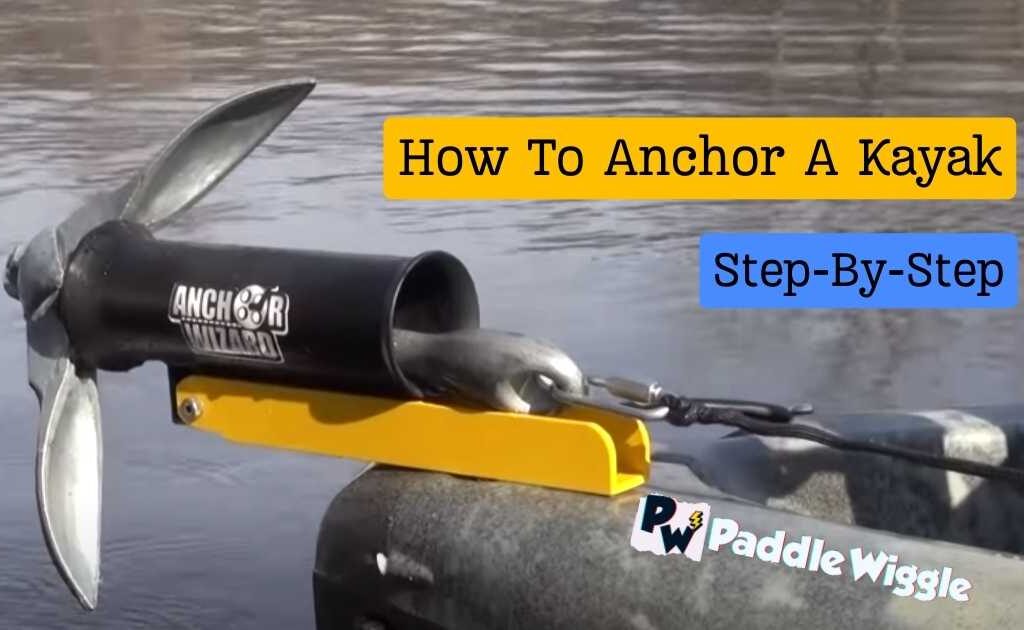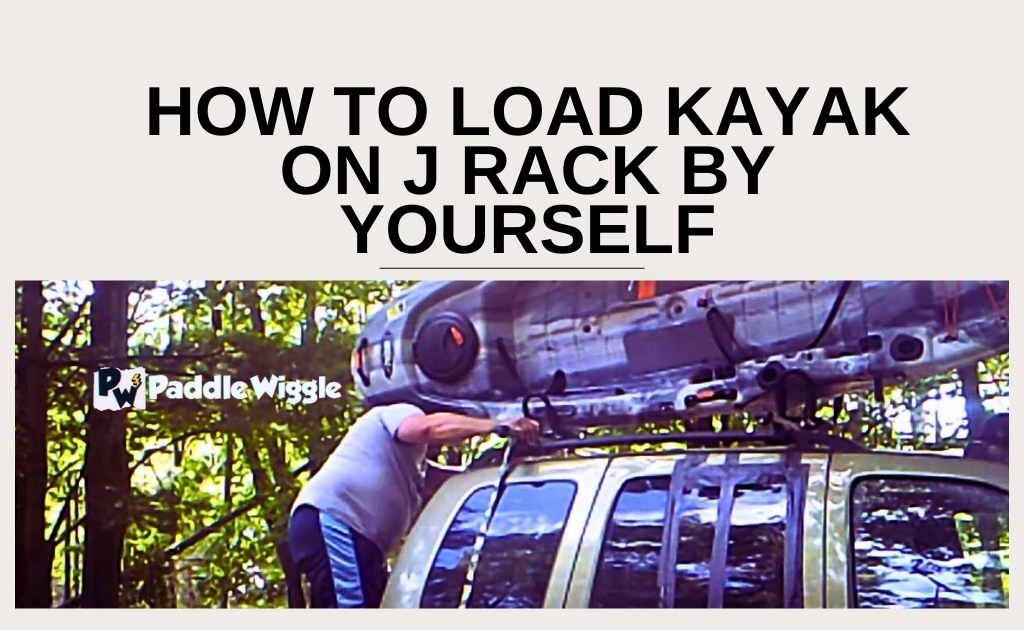Kayaking is a fantastic way to stay fit and healthy. The ultimate workout offers you an incredible experience on the water. However, like any physical activity, it’s crucial to prioritize your well-being and avoid potential injuries. One question that often lingers in the minds of kayakers is back pain from kayaking.
Let’s address the burning question: Can kayaking cause back pain? The short answer is YES, it can! Kayaking involves several muscles working together. And each stroke requires twisting and turning, which can strain your back muscles. Furthermore, sitting in a kayak for prolonged periods can lead to discomfort and stiffness in your back.
But fret not! We won’t let that dampen your spirits or discourage you from embarking on incredible kayaking adventures. With the right techniques and precautions, you can bid adieu to back pain and revel in the joy of kayaking without any worries.
Contents
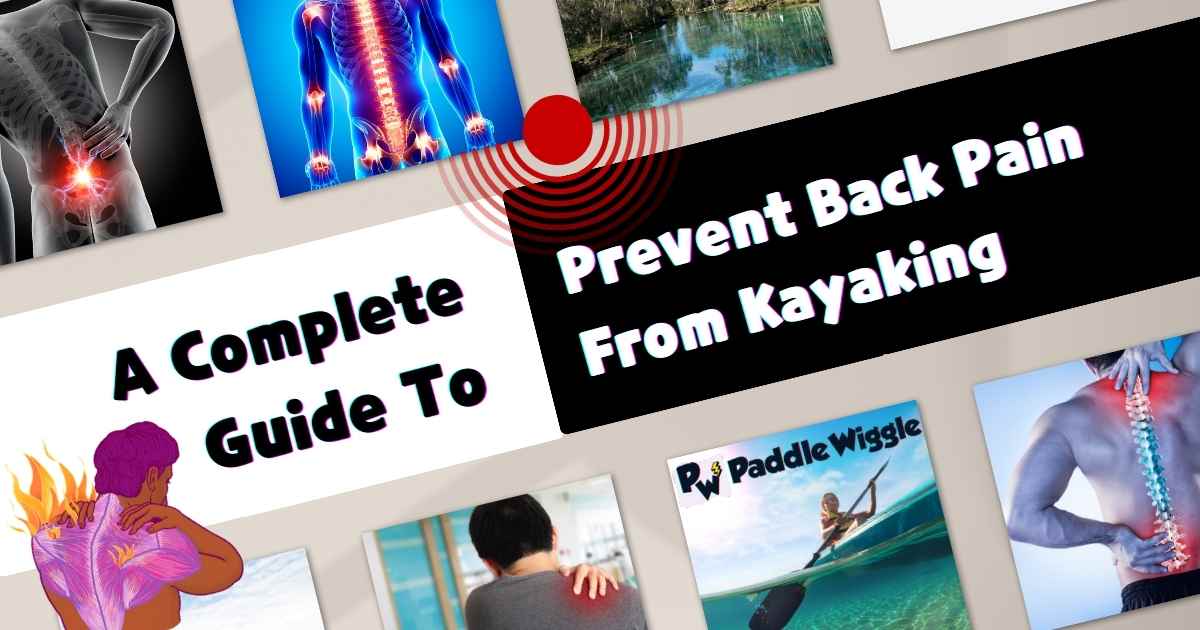
How Can Kayaking Cause Back Pain?
Sometimes, when you go kayaking, your back might start to ache. Let me tell you why that can happen.
When you’re in a kayak, sitting in one position for a long time, it can make the muscles and joints in your lower back feel stiff and not so great. And when you twist your body to paddle, it can strain the muscles in the middle and upper parts of your back, making them feel sore and uncomfortable.
Back pain while kayaking can happen due to several reasons. That’s why it’s crucial to clearly understand the causes of back pain from kayaking.
Understanding The Causes Of Back Pain From Kayaking
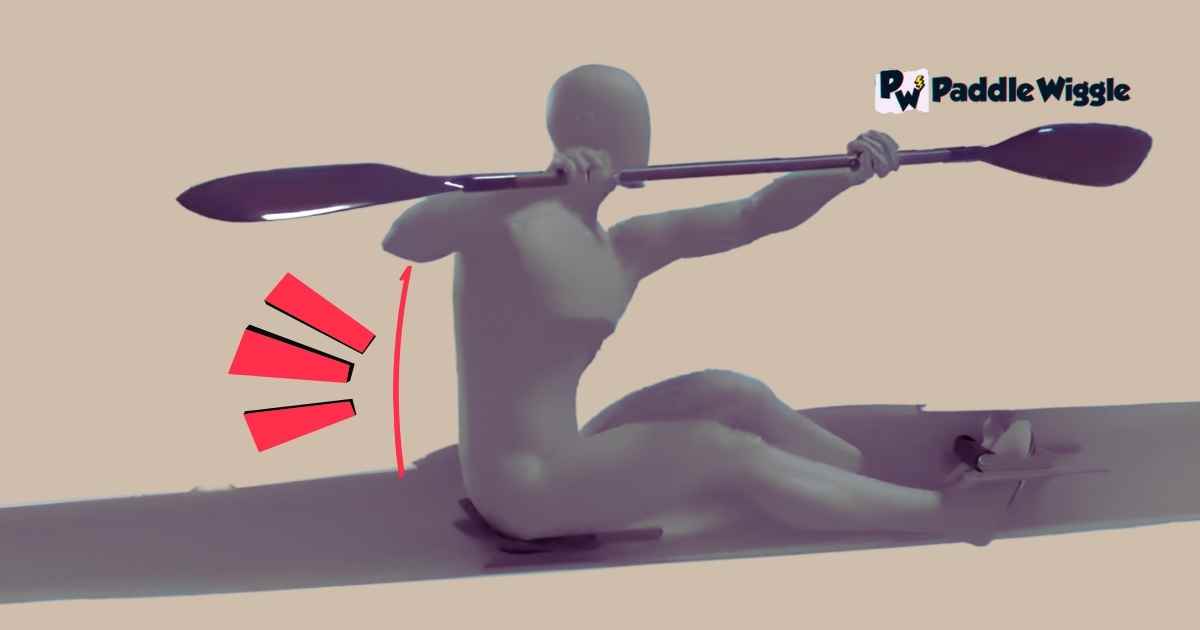

Imagine kayaking as a thrilling dance with the water. Just like in a dance, your body moves, twists, and turns in synchrony with the rhythm of the waves. Now, picture your back as the lead dancer, gracefully guiding the movements.
However, even the most skilled dancer can experience strain and discomfort. And this mostly happens due to not maintaining proper techniques and alignment.
Similarly, repetitive twisting motions, prolonged sitting, and improper posture can cause back pain in kayaking.
Think of your back as a flexible instrument, capable of flowing harmoniously with the kayak’s movements. But, just like an instrument, it requires proper care and attention to avoid playing a sour note.
If you neglect your posture, forcefully twist and turn without control, or spend hours sitting in an unsupported position, your back can become strained and unhappy, just like an out-of-tune instrument.
Let’s have a look at some common causes of back pain from kayaking.
Twisting Movements
When you go kayaking and twist your body to paddle, it can strain your back muscles, joints, and ligaments. Doing this over and over again can make your muscles tired and uncomfortable, which can lead to back pain.
Sitting For A Long Time
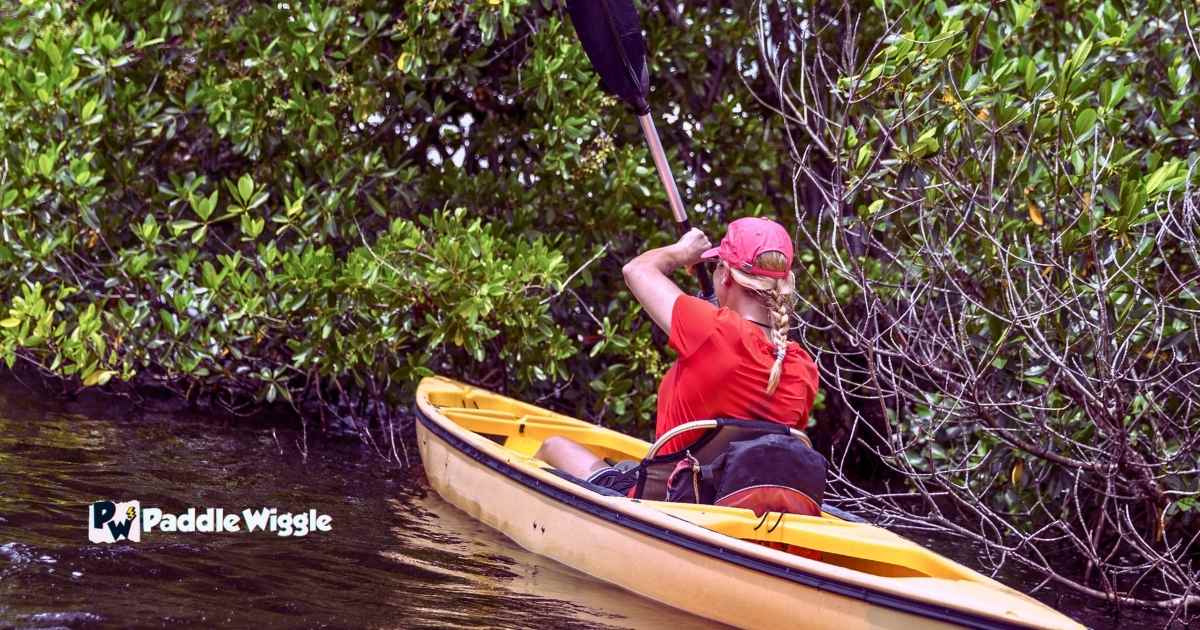

Kayaking means sitting in one position for a while. This lack of movement and the constant pressure on your lower back can make your muscles feel stiff and tense. It can even put pressure on the discs in your spine, which can cause back pain.
Weak Core Muscles
Your core muscles are important for supporting and stabilizing your spine while kayaking. If your core muscles are not strong enough, it can put extra stress on your back muscles, which can lead to strain and pain.
Bad Posture
It’s essential to have good posture while kayaking. Slouching or hunching forward can put too much strain on your back muscles and cause discomfort. It can even lead to injuries.
Not Warming Up or Stretching Enough
It’s important to warm up your muscles before kayaking and to stretch them properly. If you skip this step, your muscles might be more prone to strain and injury during kayaking, which can result in back pain.
Wrong Equipment Setup
Using kayaking equipment that doesn’t fit you properly can also contribute to back pain. If your seat, footrests, or paddles don’t fit your body well, they can make you sit in uncomfortable positions that strain your back.
Preventing Back Pain From Kayaking
So, how can you prevent back pain from spoiling your kayaking adventures? First and foremost, it’s important to maintain good posture while you’re paddling. Sit up straight and avoid hunching forward or slouching.
You can also modify your kayak seat or add extra padding to provide better support for your back.
But that’s not all! Let’s explore some effective strategies to keep your back healthy while enjoying kayaking:
Paddle Smarter, Not Harder!
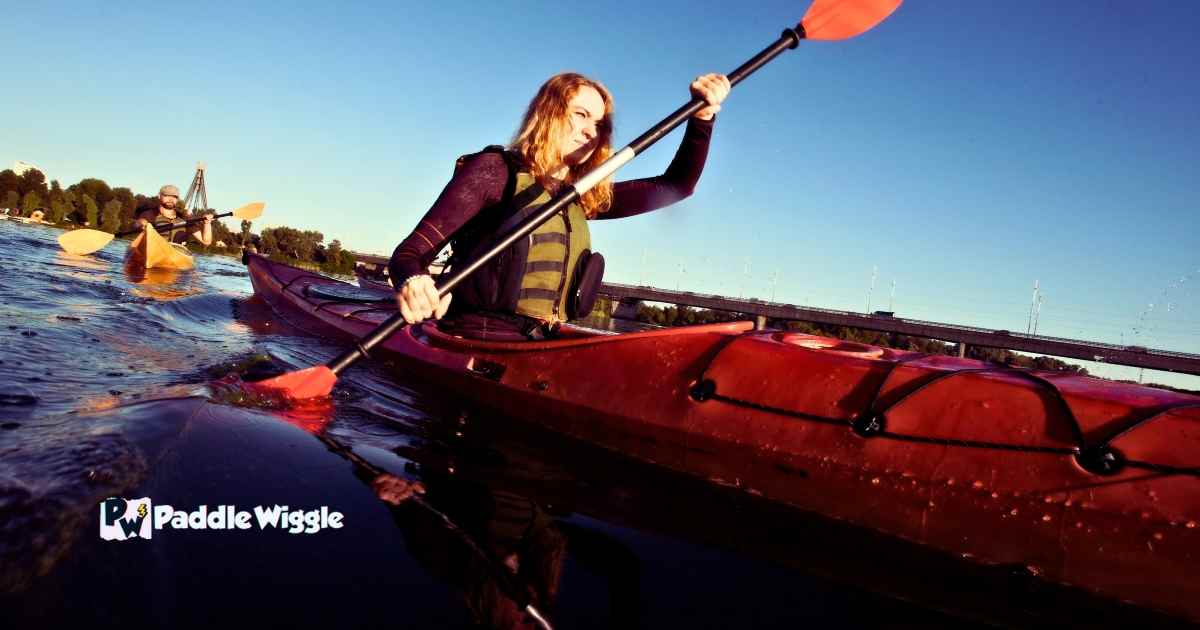

Proper techniques and strategies make kayaking easier on your body. So, by avoiding unnecessary strain and stress on your back, you can minimize the risk of experiencing pain.
Here’s what you need to know to make your kayaking more efficient and smarter.
Correct Paddling Form
- Hold the paddle with one hand at the top and the other at the base. This grip provides better control and allows you to generate more power with each stroke.
- Engage your core muscles by utilizing proper torso rotation. When you paddle, twist your upper body from side to side while keeping your lower body stable. This technique helps distribute the effort evenly and reduces strain on your arms and shoulders.
Maintaining Correct Posture And Body Alignment While Kayaking
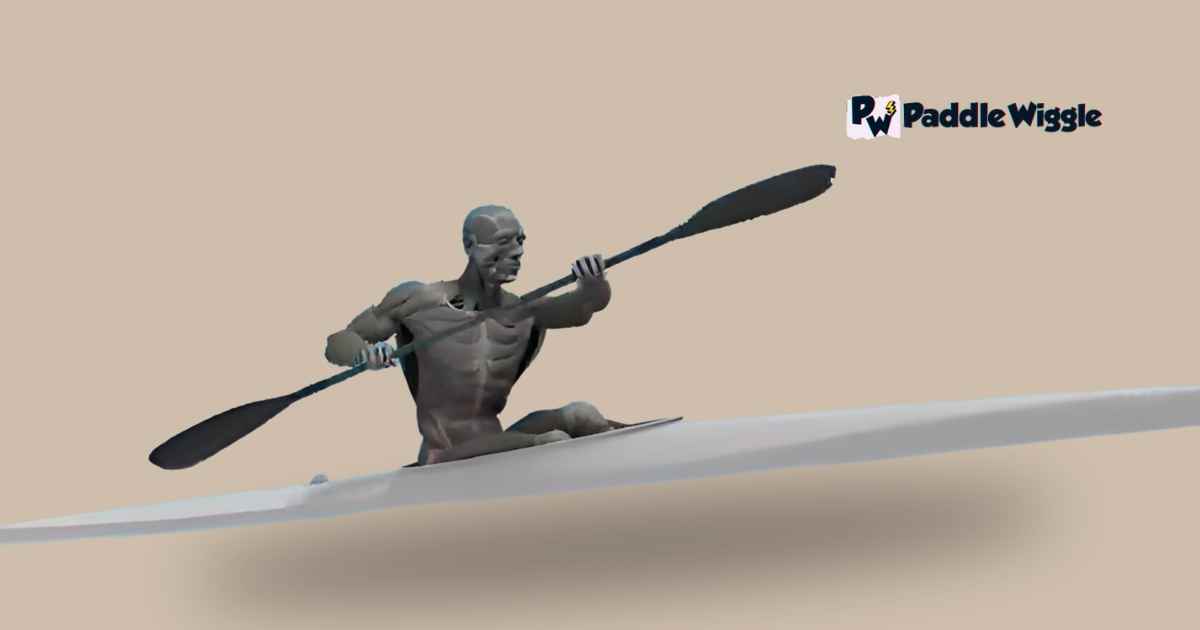

Maintaining proper posture and body alignment is key to avoiding back pain. Consider the following tips:
Correct Posture While Sitting In The Kayak
- Sit up straight with an upright posture. Keep your shoulders relaxed and avoid slouching.
- Ensure that your spine remains in a neutral position, neither overly arched nor rounded. This alignment helps distribute the load evenly along your back and minimizes stress on specific areas.
Distributing Body Weight Evenly
- While sitting in the kayak, distribute your body weight evenly across your buttocks and hips. This reduces the strain on your lower back and promotes better spinal alignment.
Applying Proper Body Mechanics during Kayaking Maneuvers and Strokes
Using the right body mechanics during kayaking maneuvers and strokes is crucial for preventing injuries and minimizing back pain. Consider the following techniques:
Using Leg And Hip Movements
- Instead of relying solely on your arms, engage your leg and hip muscles while paddling. Pushing with your legs and using your hips to rotate your body adds power to your strokes and reduces strain on your back muscles.
Avoiding Excessive Twisting Or Overreaching
- Be mindful of your range of motion while paddling. Avoid over-twisting your body or reaching too far with your paddle, as this can strain your back muscles. Maintain a comfortable and controlled range of motion to protect your back.
Maintaining A Neutral Spine Position
Keeping your spine in a neutral position is essential for preventing back pain while kayaking. Here’s how to do it:
- Avoid excessive bending or twisting of your spine during paddling. Instead, focus on maintaining a natural alignment where your spine is neither overly curved nor twisted. This posture promotes stability and reduces the risk of strain on your back muscles.
Getting Your Body Ready For Kayaking Prevents Back Pain
Before you start kayaking, we recommend you warm up your body. Because it gets your blood flowing better, sending more oxygen and nutrients to your muscles.
It also helps your muscles, joints, and heart get ready for kayaking. Additionally, this also keeps muscles from getting stiff and helps prevent injuries.
Specific stretches target the muscles you use the most while kayaking. Try these three stretches before you sit on your kayak:
- Seated Spinal Twist: This stretch helps loosen your back and improve flexibility. Sit with your legs crossed and slowly twist your upper body from side to side, gently stretching your back muscles.
- Hip Flexor Stretch: Your hip flexors play a role in maintaining good posture while kayaking. Kneel on one knee, keeping your other leg forward. Lean forward gently, feeling the stretch in the front of your hip. Switch legs and repeat.
- Hamstring Stretch: Your hamstrings are the muscles in the back of your thighs. To stretch them, sit on the ground with one leg extended. Bend the other leg and bring the sole of your foot to touch the inner thigh of your extended leg. Reach forward toward your toes, feeling the stretch in your hamstring. Repeat on the other side.
Choose The Right Kayak And Equipment
Another way to prevent back pain while kayaking is by selecting the right kayak and equipment that suits your body. Let’s explore how this can help:
Select A Well-Fitting Kayak
Picking a kayak that suits your body size and proportions is crucial. A too-small or big kayak can force your body into uncomfortable positions and put extra strain on your back.
Look for a kayak that matches your body’s dimensions, allowing you to sit comfortably and maintain proper posture.
Consider The Paddle Length And Grip Size
Your paddle is another essential piece of equipment that can affect your comfort and efficiency while kayaking. Ensure that the paddle is the appropriate length for your height. It can strain your back and make paddling harder if it’s too long or too short.
Additionally, check that the grip size of the paddle feels comfortable in your hands, allowing you to maintain a secure hold without excessive gripping.
Strategies For Preventing Back Pain During Kayaking
Kayaking is an exciting adventure that lets you explore beautiful waters while getting some exercise. But a long expedition can stern your back. That is why taking care of your back is important to ensure a comfortable and enjoyable experience.
Here are a few strategies to prevent back pain while kayaking:
Take Breaks Every 30 Minutes
Remember to take regular breaks during your kayaking journey. Sitting in the same position for too long can strain your back muscles and make them feel achy. Every 30 minutes or so, find a safe spot to stop, stretch your body, and give your back a little rest.
You can stand up, walk around, or even do a quick stretch to keep your muscles happy.
Adjust Your Paddling Technique
Using the right paddling technique can make a big difference in preventing back pain. Here are a few things to remember:
- Hold your paddle correctly: Place one hand at the top of the paddle and the other hand slightly lower. This helps you maintain control and prevents unnecessary strain on your back.
- Engage your core: Your core muscles are like a strong support system for your back. Engaging them while paddling provides stability and reduces the strain on your back muscles.
- Use your whole body: Instead of relying only on your arms, try using your torso to power your paddling strokes. Rotate your body from the hips as you paddle, involving your back and core muscles. This way, the workload is shared, and your back won’t get tired too quickly.
Listen To Your Body
Your body is an amazing communicator. Pay attention to any signals it gives you during kayaking. If you start feeling discomfort or pain in your back, it’s important to listen to your body and take action. Don’t push through the pain. Take a break, stretch, or adjust your seating position to find a more comfortable posture.
It’s better to address any discomfort early on than to let it become a bigger problem later.
Recovery Strategies To Relieve Back Pain After Kayaking
Kayaking can put a strain on your back muscles and joints. So after a trip, taking care of your back and helping it recover from any discomfort or pain is important. It’s just like when you feel tired after a busy day, your back muscles also need time to relax.
Rest And Relaxation
Give your back a break by resting and allowing it to recover. Find a comfortable position, lie down, and relax your muscles. You can also use a soft pillow or a cushion to support your back and relieve any pressure.
Apply Heat Or Cold
A heating pad or warm bath can help relax your back muscles and ease any soreness. Alternatively, you can apply a cold or ice pack wrapped in a cloth to reduce inflammation and numb any pain.
Gentle Stretches
Engage in gentle stretching exercises to loosen up your back muscles. Simple stretches like gentle twists forward bends, and cat-cow stretches can provide relief and improve flexibility.
Take Over-The-Counter Pain Medication
If the pain persists, you can consult a parent, guardian, or healthcare provider about taking over-the-counter pain medications suitable for your age to alleviate any discomfort. Remember to follow the instructions and only take the recommended dosage.
Stay Hydrated
Drink plenty of water to stay hydrated. Hydration is important for maintaining overall muscle health and promoting recovery.
Kayak Accessories To Help You Avoid Back Pain
Having the right accessories can make a big difference in preventing back pain and ensuring a comfortable experience on the water. These accessories are designed to support your body, provide proper alignment, and reduce strain on your back.
Let’s explore some kayaking accessories that can help you avoid back pain.
Backrest
A backrest is a supportive accessory that attaches to the back of your kayak seat. It provides additional lumbar support and promotes proper posture while paddling. By keeping your back properly aligned, a backrest can help prevent strain on your back muscles and reduce the risk of back pain. Some backrests are adjustable, allowing you to find the most comfortable position for your back.
Kayak Seat Cushion
A kayak seat cushion is a soft and padded accessory that you can place on your kayak seat. It provides extra cushioning and support for your bottom and lower back, reducing pressure points and enhancing comfort during long paddling trips. The cushion helps to distribute your weight evenly, reducing the strain on your back muscles and preventing discomfort.
Lumbar Rolls
Lumbar rolls are small cushions that provide support to the natural curve of your lower back. They can be placed behind your back in the kayak seat to maintain proper alignment and reduce strain on your back muscles.
Final Word
So, remember to listen to your body, take breaks, and paddle smartly to prevent back pain while kayaking. And if you start feeling fatigued or notice any discomfort in your back, don’t push through it. Take a break, stretch, and give your body the time it needs to recharge!

